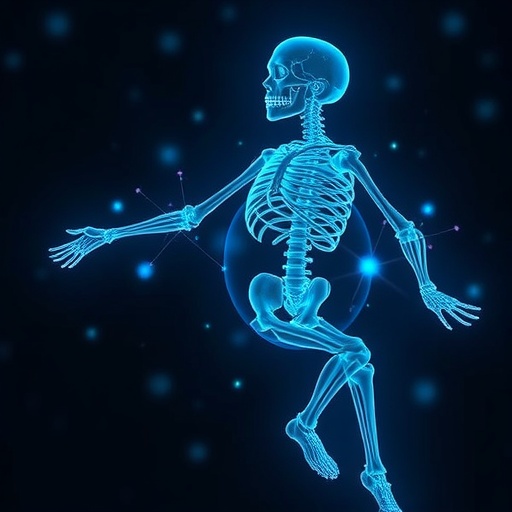Artificial Intelligence (AI) has a profound potential to revolutionize the field of orthopaedics, particularly in education, training, and research. In a groundbreaking systematic review published in BMC Medical Education, researchers Banskota, Bhusal, and Yadav delve into how AI can effectively contribute to transforming orthopaedic practices. The advantages of AI in this domain are immense, offering possibilities that were unimaginable a few years back. This integration is still in the early stages, but the implications are already beginning to shape the future of medical education and practice.
One of the most promising aspects of AI in orthopaedic education is its potential to enhance learning experiences for medical students and residents. Traditional learning models rely heavily on textbook knowledge and hands-on training, but AI introduces a new paradigm through simulation and virtual reality environments. These immersive tools allow learners to practice surgical techniques and patient care scenarios in a risk-free setting. By using AI-driven simulation programs, students can interact with virtual patients, honing their skills and gaining valuable feedback in real-time, which significantly accelerates the learning process.
Moreover, AI can analyze vast amounts of data to customize learning experiences according to individual student needs. By assessing a learner’s progress and identifying specific areas where improvement is needed, AI applications can provide tailored educational content. This adaptive learning approach not only improves knowledge retention but also ensures that every student receives the support they need to thrive during their training. As a result, the learning curve for residents may become steeper, leading to better-prepared orthopaedic surgeons entering the field.
In addition to enhancing education, AI’s role in training and evaluation cannot be understated. Training programs can leverage AI technologies to track performance outcomes, analyze surgical procedures, and assess the efficacy of techniques. For instance, computer vision algorithms can scrutinize recordings of surgical operations, identifying both adherence to best practices and opportunities for improvement. Such feedback mechanisms are invaluable for training orthopaedic surgeons, ensuring they possess the skills necessary to provide high-quality care once they graduate into clinical practice.
Research in orthopaedics is evolving due to AI’s capacity to process and interpret data at unprecedented speeds and scales. Machine learning models can analyze extensive clinical datasets, uncovering patterns and correlations that might remain hidden to human researchers. This capability not only accelerates the pace of research but also enhances the accuracy of study outcomes. For example, AI can help identify the most effective treatment options for complex fractures or provide insights into patient outcomes following various surgical interventions.
Additionally, AI systems are being developed to assist in diagnostic processes. In the realm of orthopaedics, this could mean improving the accuracy of radiographic assessments. Image recognition algorithms can detect fractures, bone abnormalities, and other musculoskeletal conditions more efficiently than traditional methods. By incorporating these algorithms into diagnostic practices, radiologists and surgeons can enhance their diagnostic accuracy, potentially leading to better patient outcomes.
Another fascinating application of AI in orthopaedic research involves predictive analytics. By leveraging patient data, AI can generate predictive models that assist clinicians in making informed decisions regarding treatment plans and preventative care strategies. For instance, AI can aid in predicting which patients are at risk for complications after surgery, allowing healthcare providers to implement proactive measures.
Despite the numerous advantages outlined, integrating AI into orthopaedic education and practice is not without challenges. One of the significant hurdles is ensuring data privacy and security as AI systems handle sensitive patient information. Robust protocols must be established to protect patient data while still harnessing the power of AI technologies. Additionally, healthcare providers must receive appropriate training to work alongside these AI systems effectively.
Furthermore, there is an ongoing debate about the implications of increasing reliance on AI in medical practice. As machines take on more responsibilities in the decision-making process, there are concerns regarding accountability and the potential for diminished human skills. Balancing AI’s capabilities with the essential role of human practitioners remains a critical issue in this ongoing transition.
Ultimately, the systematic review highlights the multifaceted benefits and challenges of incorporating AI in orthopaedic education, training, and research. As this technology continues to evolve, it is imperative for stakeholders in the medical community to remain engaged and informed about the latest developments. Navigating this landscape will be critical to ensuring that the implementation of AI in orthopaedics enhances patient care rather than diminishes it.
The future of orthopaedic practice is undeniably intertwined with advancements in artificial intelligence. From augmenting educational platforms to improving research methodologies, the applications are vast. As the medical field embraces this technological transformation, orthopaedic professionals must foster an environment of continuous learning and adaptability. This will ensure that they not only keep pace with AI developments but also contribute to shaping a healthcare landscape where technology and human expertise coexist synergistically.
By addressing the challenges and leveraging the benefits AI brings to orthopaedics, both practitioners and patients stand to gain immensely. Education, training, and research are on the cusp of a significant evolution, and as these innovations unfold, the aim is clear: to enhance the quality and efficiency of care provided to patients around the world.
In summary, the systematic review underscores AI’s potential to revolutionize how orthopaedic education, training, and research are conducted. By integrating these advanced technologies, the field can anticipate not only improved learning outcomes for medical professionals but also better patient care standards and enhanced research efficacy. The journey has just begun, but the prospects are optimistic, and as AI evolves, so too does the promise of a better future in orthopaedic medicine.
Subject of Research: Artificial Intelligence in Orthopaedic Education, Training, and Research
Article Title: Artificial intelligence in orthopaedic education, training and research: a systematic review.
Article References:
Banskota, B., Bhusal, R., Yadav, P.K. et al. Artificial intelligence in orthopaedic education, training and research: a systematic review.
BMC Med Educ 25, 1594 (2025). https://doi.org/10.1186/s12909-025-08162-y
Image Credits: AI Generated
DOI: https://doi.org/10.1186/s12909-025-08162-y
Keywords: Artificial Intelligence, Orthopaedics, Education, Training, Research, Medical Technology, Predictive Analytics, Diagnostic Accuracy, Machine Learning.




